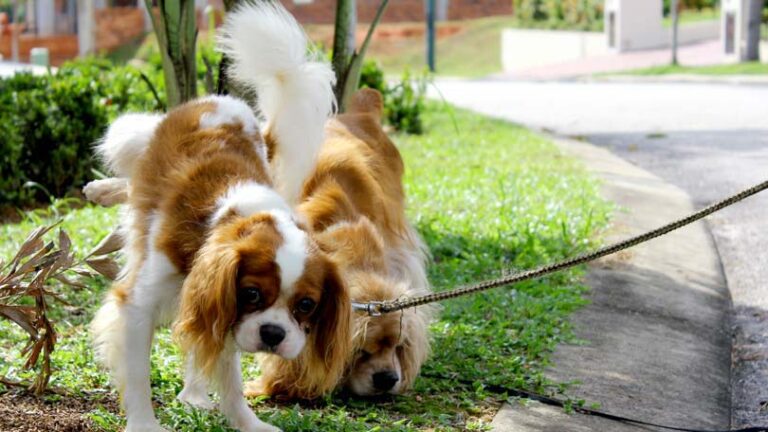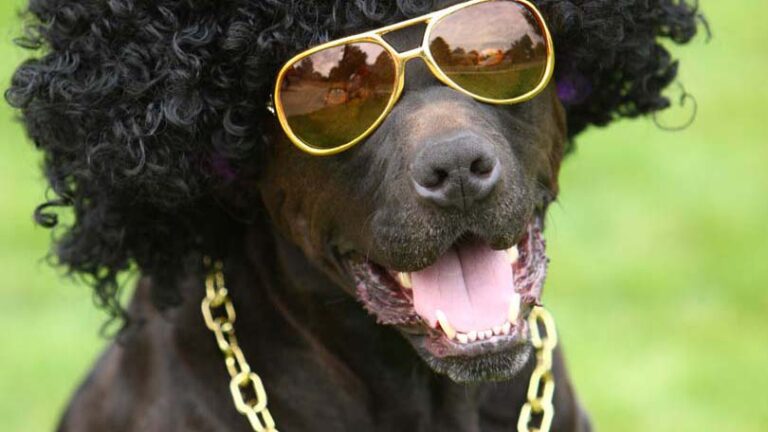Dog Collars – Not Just a Fashion Accessory
Although you may not be able to convince Paris Hilton of it, a dog collar is more than just a fashion accessory. Yes, they come in every color under the rainbow, in every material known to man and canine, and even come with a myriad of bling to choose from, a collar is actually a vital piece of safety equipment for your dog.
Safety equipment you ask?
Yes, safety equipment. What else is going to hold their dog tags in case they get lost? Dogs do not have pockets and yes, some dogs have microchips but when your neighbor down the road finds your dog, he does not have the necessary microchip scanner to read’ your phone number. A tag guarantees anyone who finds your dog has the ability to phone you to come and pick him up versus the necessity of phoning the pound in to ‘read’ the chip.
Collars also attach to leashes and a leash is the quintessential piece of safety equipment for our canine companions. Ask an emergency veterinarian how many dogs they have seen hit by a car while on a leash. Now ask them how many dogs they have seen that have been hit by a car while off lead. See the importance of a leash?
Types of Dog Collars
A big part of choosing a dog collar is personal choice but much of it should also be common sense. There are many types of collars and all have a specific use.
Buckle collars – the most common of all collars. These collars are great for everyday use and holding dog tags. They come in thousands of colors, styles, patterns, strengths, and buckle types. A knowledgeable pet store clerk can help you pick the appropriate size and strength for your dog. Beyond that, pick a color and run with it.
Choke or Slip collar – these are walking or training collars that help control a pulling dog. They speed up training in an adult dog as they give a slightly sharper ‘correction’ then a buckle collar. These collars should never be left on the dog nor should they be used on a dog under eight months of age. These come in chain or nylon.
Martingale collars – these are a self-limiting choke collar meaning they tighten to aid in training or pulling but they can be adjusted so that the dog cannot actually choke themselves. Many people use these are regular day to day collars in lieu of using both a buckle collar and choke collar for walking. Martingales come in chain, nylon or a combination of both.
Harness – there are dozens of styles of harnesses and all have their purpose. The traditional harness styled after sled dog or carting harnesses allow the dog to comfortably put his shoulders into his work. For the average dog, this means pulling you off your feet. There are harnesses that attach the leash at the front of the harness used for training dogs that pull – the more they pull, the more the harness swings their body around to face you versus moving them forwards. A Lupi is another style of harness for pulling dogs designed so that the dog’s front legs are pulled out from under them if they pull too hard. Both these harnesses are great for training but have their limitations.
Head harnesses – Halti and Gentle Leader are two of the brand names for these training aids. They work by controlling the dog’s head so they are not comfortable pulling. Both types work well and although the dog may take a while to adjust to the collar, they are often the best way to train a dog not to pull or to control and train a dog that has fear or aggression issues .
Prong or Pinch collars – these are a modified Martingale. They are self-limiting like the Martingale but have prongs that dig in when the dog pulls too hard. Controversial within the dog community, these collars are best avoided.
Considerations when Choosing a Dog Collar
Obviously the top consideration to choosing a dog collar is the comfort and safety of your dog. A well-fitting buckle style or Martingale collar can stay on a dog indefinitely without causing any trouble however, never leave your dog unattended while wearing a choke or slip collar – dogs have been known to hang themselves if the collar gets caught on a fence or tree.
What the collar is made from is another consideration. Nylon is long-wearing and non-staining. It is fully washable and very strong. Leather is long lasting and strong but not washable so, over time, it will begin to smell. Chain is long-lasting but does rust, staining your dog’s fur. It is also noisy so it is a poor choice for day-to-day wear. Other materials include fake leather or plastic, hemp, and rope. Spend your money well and choose a collar that will last for a few years.
For big, strong dogs, be wary of plastic buckles and quick release buckles. These are rated to withstand a certain amount of weight – far more then your dog weighs . However, they are made to withstand a sudden tug with the full strength of your dog behind it. These collars are only recommended for small or older dogs that do not tug on their leash.
Buying a collar is not as simple as it may seem on first glance. Always consider the strength and durability of the collar and check it often for signs of wear. Your dog’s life depends on your choice so do not be attracted to flash and style. Always use common sense when buying their daily collar and your dog will never have to see that emergency vet!

Having discovered a fondness for insects while pursuing her degree in Biology, Randi Jones was quite bugged to know that people usually dismissed these little creatures as “creepy-crawlies”.







